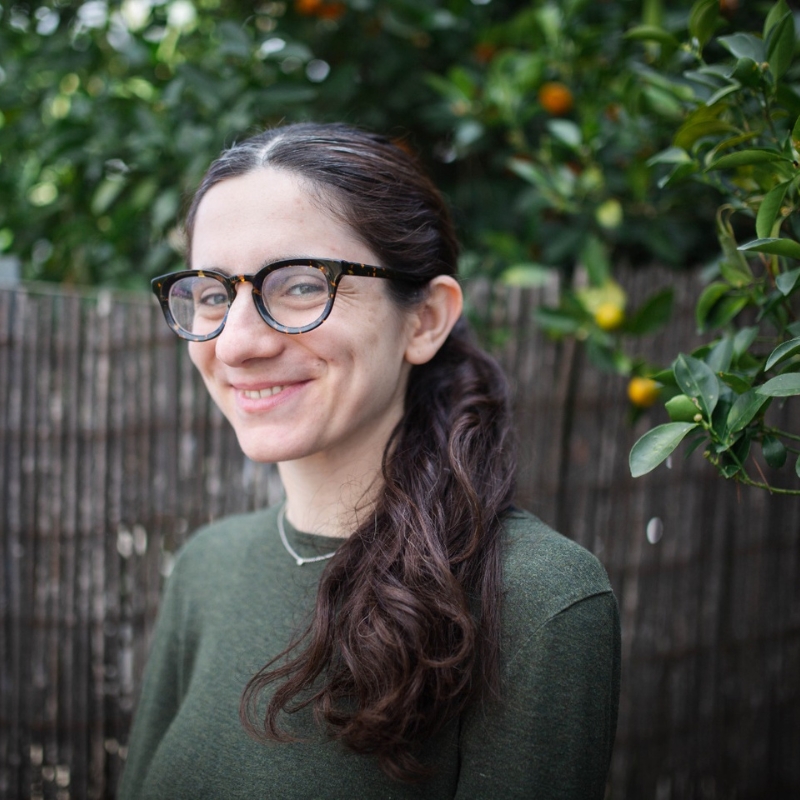My twelfth-grade English teacher impressed on us the importance of a particular line in “Hamlet,” “I have that within that passes show” (“Hamlet”, 1.2.85). At eighteen, I was, not unlike Hamlet but definitely under less tragic circumstances, a young adult confronting grief, mortality, and the loneliness of emotion. I was thinking all the time about what I carried within me that others couldn’t see, that I couldn’t adequately represent to others even if I tried. Yes, my teacher was right. This line, in which Hamlet articulates the limits to which he can share his grief, speaks to the truth of just how often the depth of our emotion cannot be translated and how that in itself can be painful. But it can also be the key to honoring the wholeness of the people with whom we interact. It can be a reminder to show tenderness around the emotion we cannot comprehend and to remember all that people carry that we cannot see at all.
This week’s parshah, Naso, offers an opportunity to consider the burdens of the people around us. The text attends to the division of roles involved in carrying pieces of the Mishkan. As Rabbi Shani Rosenbaum points out in her 2022 (M)oral Torah, this carrying is avodah, part of the holy worship of the Levites. She examines this avodat masah, this service of burden-bearing, in the context of emotional burdens, particularly the emotional burden of fighting for justice. I want to build on her insight and consider a different aspect of how the Levites carry what they do.
Find more commentaries on Naso.
The 13th-century French commentator, Chizkuni, in his commentary on Numbers 4:27, responds to a disparity between the text’s description of the Kehatite responsibilities and those of the other Levite families. Earlier, in Numbers 4:15, the Kehatites’ burden is described as follows: “When Aaron and his sons have finished covering the sacred objects and all the furnishings of the sacred objects at the breaking of camp, only then shall the Kehatites come and lift them, so that they do not come in contact with the sacred objects and die. These things in the Tent of Meeting shall be the porterage (masa) of the Kehatites.” Here in Numbers 4:27, with regard to the Gershonites, the language differs: “All the duties of the Gershonites, all their porterage and all their service, shall be performed on orders from Aaron and his sons; you shall make them responsible for attending to all their porterage ” The text uses the Hebrew phrase “ufekadetem aleihem b’mishmeret et kol masa’am.” (Numbers 4:27). A few verses later, in Numbers 4:31, the text uses corresponding language about the charge of the Merrarites, the third Levite clan, again using the words, “mishmeret masa’am,” “their porterage tasks,” the phrase that is not used in reference to the Kehatites (Numbers 4:31).
Chizkuni explains the difference in language by noting that what the Kehatites carry is concealed from sight. “You shall appoint their entire burden as their charge (mishmeret),” Chizkuni writes, (quoting the words I translated above as “responsible” and “porterage tasks” as per the JPS translation). “This is an instruction that we do not find in connection with the duties of the house of Kehat. The reason is that everything the Kehatites carried was covered and not visible to anyone else…” Chizkuni refers back to the unique precarity of the Kehatite load, as described earlier in Numbers 4:15. The Kehatites’ load is covered since if they touch it directly, they will die. In other words, Chizkuni understands the text as acknowledging the difference between the burdens we can see and the burdens we cannot see.
Parshat Naso evokes the lessons of trauma-informed care, which teaches us to remember the prevalence of traumatic experiences, to avoid further harm, and to help build pathways toward healing. We, like the Israelites, may find ourselves carrying heavy items and memories as we move through life’s journeys. We may also find ourselves supporting people whose burdens are too much for them to bear alone. For those of us who are not trauma or mental health experts, there can be a limit to our capacities in this realm. Sometimes we can offer people the support they need, and sometimes we must recognize what is beyond our abilities, and, in turn, help connect people with the resources that will help them carry their load through the wilderness.
Sign up to receive (M)oral Torah in your inbox each week.
For me, acknowledging what I cannot see lies at the heart of community building. I believe in the power of peeling back the layers of the everyday to understand the depth of other people. But I believe that that process of revealing deeper layers must be linked to the knowledge that all individuals have experiences, stories, and emotions — and some of them, unfortunately, have trauma — that I will never fully understand because I do not experience them myself.
Knowing that people suffering under every system of oppression are holding entire worlds of experience — including horrific trauma — helps motivate me to take action. It helps me feel connected to the humanity of people in my circles and in the broader world, as ultimately the invisible heaviness of experience is one of the things that I know to be true of being human. I understand in my own small way that there are always limits to what we can see about each other, and I believe that that reality might be among the things that unite us. Even with different kinds of baggage and varying levels of difference between people, there are always pieces of the burden that are impossible to fully comprehend.
Yael Marans is a rabbinical student at Hebrew College who lives in Somerville, Massachusetts. She is part of the inaugural cohort of T’ruah D’var Torah Fellows.

